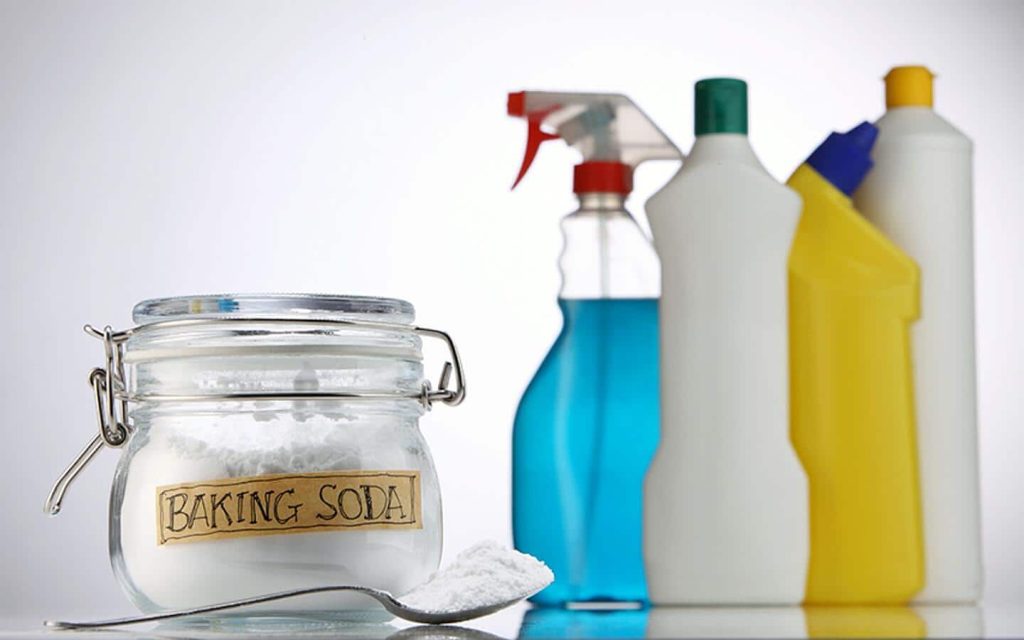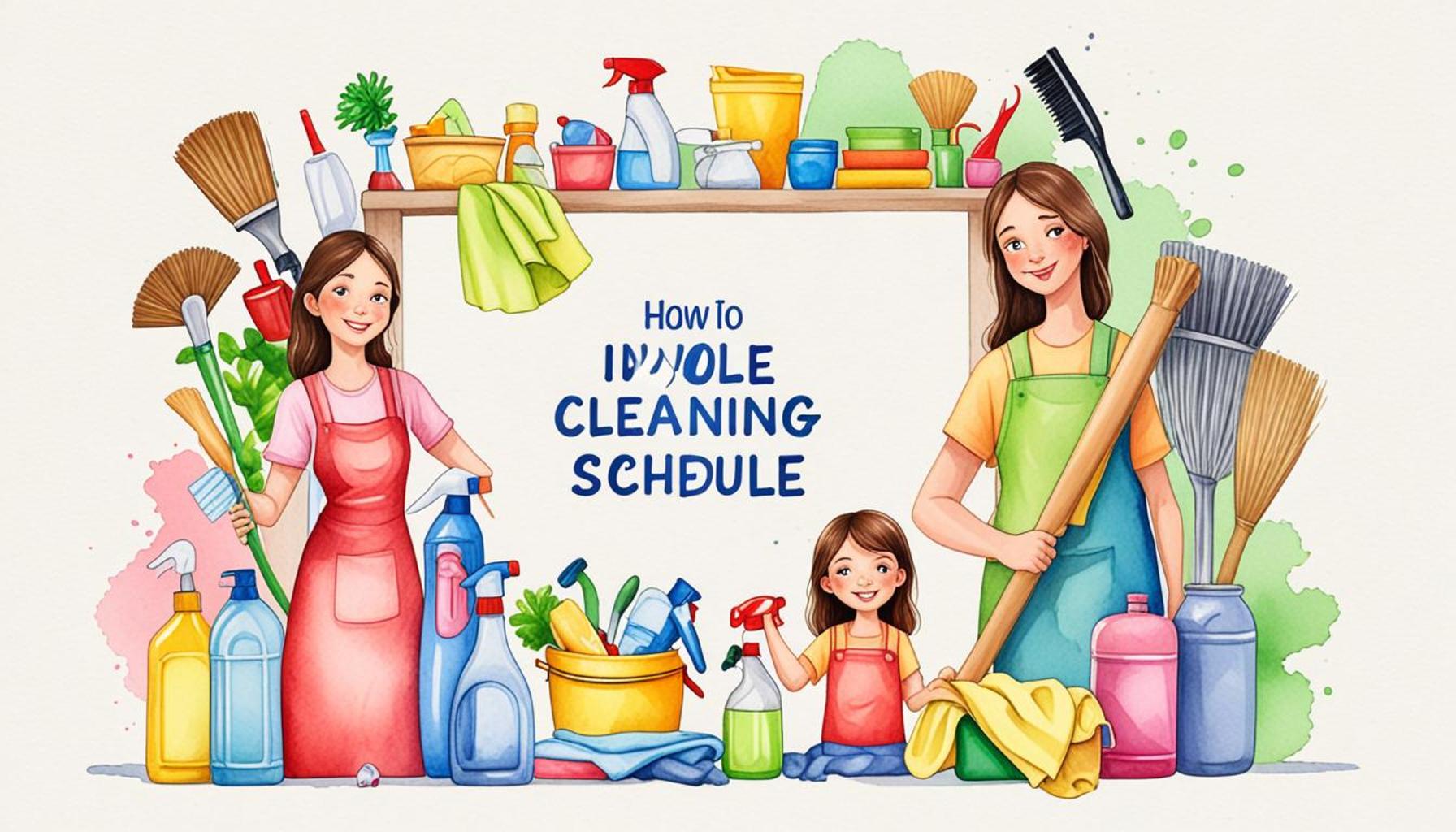Tips to Customize Your Cleaning Schedule Based on Your Family’s Needs

Creating a Tailored Cleaning Schedule
In today’s busy world, maintaining a clean home can feel overwhelming. Yet, a personalized cleaning schedule can streamline your household tasks, making life significantly easier. By aligning your cleaning routine with your family’s unique needs, you can promote a healthier and more organized environment. A customized approach not only reduces stress but can also enhance productivity and foster a sense of accomplishment among family members.
Why Customize Your Cleaning Schedule?
Having a flexible cleaning schedule benefits your entire household. Here are a few compelling reasons to consider customization:
- Family Lifestyle: Understanding your family’s schedule, including school hours, work commitments, and even extracurricular activities, allows you to allocate time effectively. For example, if your children have sports practice in the evening, it might be best to schedule vacuuming and dusting for the weekends when everyone is home to lend a hand.
- Health Considerations: Tailor tasks based on allergies or sensitivities to ensure a safe space for everyone. For instance, if someone in the family suffers from asthma, you might prioritize reducing dust accumulation in common areas and consider using hypoallergenic cleaning products.
- Age-Appropriate Tasks: Involving children in age-appropriate chores can foster responsibility while easing your workload. Young kids can handle tasks like sorting laundry or wiping down surfaces, while older children might be ready to tackle vacuuming or washing dishes. Engaging kids in cleaning not only teaches them valuable life skills but also builds teamwork in maintaining the home.
Finding What Works Best
Identifying the right approach is essential for an effective cleaning schedule. Start by assessing the following:
- Weekly vs. Daily Tasks: Determine which chores need daily attention, such as making beds or washing dishes, and which can be done weekly, such as mopping floors or cleaning bathrooms. This distinction helps create a manageable workload and ensures consistency in maintaining cleanliness.
- Priority Areas: Focus on high-traffic spaces like the kitchen or living room to maximize impact. Keeping these areas tidy not only makes your home more inviting but also limits the spread of germs and allergens that may be present in frequently used spaces.
- Time Allocation: Set realistic timeframes for each task to avoid burnout. For example, allocate 15 minutes for a quick tidy-up each morning and 30 minutes for deeper cleaning tasks on weekends. This kind of planning can help maintain enthusiasm and prevent the feeling of being overwhelmed by chores.
As you explore these tips, remember that each family’s needs are distinct. The key to success lies in flexibility—don’t hesitate to tweak your schedule as needed. Seasonal changes or new activities might require adjustments. Embracing this adaptability will lead you to find the perfect balance necessary to keep your home spotless and organized. A well-structured cleaning schedule serves not just as a task list, but as a pathway to a harmonious living environment for you and your family.
DISCOVER MORE: Click here for effective cleaning strategies

Assessing Your Family’s Needs
The first step in customizing your cleaning schedule is to assess your family’s unique needs. An effective cleaning routine should be a reflection of your household dynamics, making it essential to consider your family size, daily habits, and any specific cleaning requirements. By conducting a thorough evaluation, you can ensure that your cleaning schedule works as efficiently as possible.
Consider Your Family Size and Composition
The number of people in your household plays a significant role in determining your cleaning needs. More family members often lead to increased mess and require more frequent cleaning. To create a suitable plan, start by asking these questions:
- How many children do you have? Small children tend to create a lot of toys and messes, necessitating daily clean-ups.
- Are there any pets in your home? Pets contribute to dirt and allergens, meaning more frequent vacuuming and surface cleaning is essential.
- Do you have family members with special cleaning needs? This includes individuals with allergies or sensitivities who may require specific cleaning products or practices.
By understanding the composition of your family, you can better predict the frequency and type of cleaning tasks required. For instance, with children or pets, investing in a more intensive schedule might be necessary, especially in common areas where they spend most of their time.
Track Your Family’s Daily Routine
Next, it’s important to map out your family’s daily routine. Analyzing your schedule can reveal optimal times for cleaning tasks. Consider these factors when evaluating your family’s routines:
- Work and School Hours: Identify specific gaps in the schedule. For instance, if your kids are at school from 8 AM to 3 PM, this may be a perfect window for tackling major cleaning projects without interruption.
- Evening Activities: Plan lighter cleaning tasks on evenings when your family is busy, and save more labor-intensive chores for weekends.
- Family Member Preferences: Pay attention to who prefers to tackle certain chores. If someone enjoys cooking, perhaps they can help clean the kitchen after meals. A little bit of delegation can go a long way in making sure everyone contributes to maintaining a clean home.
Incorporating these considerations will allow you to create a cleaning schedule that harmonizes with your family’s lifestyle rather than working against it. By establishing a rhythm that meets your household’s peculiarities, you’ll make cleaning less of a chore and more of a collaborative effort. This proactive approach not only maintains cleanliness but also encourages collective responsibility among family members, promoting teamwork and communication.
| Category | Details |
|---|---|
| Family Size | A larger family may require a more detailed schedule to address varying needs and frequent messes. |
| Age of Children | Consider how the age of children influences responsibilities, adding age-appropriate tasks to your cleaning routine. |
| Work Schedules | Align your cleaning tasks with family work schedules to create a manageable approach that ensures everyone plays a role. |
| Cleaning Preferences | Gather input on preferences to ensure family members enjoy their responsibilities, making recurring tasks less tedious. |
In customizing your cleaning schedule, it’s crucial to consider the specific dynamics of your household. For instance, when assessing the impact of family size, a larger family may naturally create more clutter and require more frequent cleaning sessions. This can lead to the incorporation of quick daily tasks that prevent larger messes from accumulating, making it easier to maintain a clean living space.Furthermore, understanding the age of your children plays a significant role in assigning cleaning responsibilities. Younger children might be suited for simple tasks, while older kids can take on more complex chores. This allows you to educate them on accountability and teamwork, reinforcing valuable life skills.Additionally, it is essential to integrate cleaning routines that accommodate family work schedules. Individuals with varying commitments may find it beneficial to share chores during common downtime, thus building a sense of unity and collaboration.Finally, consider gathering the family for a discussion on individual cleaning preferences. This can boost morale, as family members may feel more invested when they have a say in their responsibilities. The key to an effective cleaning schedule lies in its ability to resonate with everyone involved, making cleanliness an achievable and enjoyable goal.
DISCOVER MORE: Click here for time-saving cleaning tips
Creating a Flexible Cleaning Schedule
Once you’ve assessed your family’s unique needs and daily routines, the next step involves crafting a flexible cleaning schedule that accommodates these identified factors. Flexibility is key; a rigid timetable can result in frustration rather than a smooth-running household. Here are some tips on how to create an adaptable schedule that maintains cleanliness without becoming a burden.
Utilize Time Blocking
One effective method for organizing your cleaning tasks is to use time blocking. This technique involves designating specific blocks of time throughout the week for various cleaning chores. By assigning specific time slots, you not only create a structured plan but also ensure that cleaning doesn’t spiral into an all-consuming endeavor. Start by dedicating short bursts of 15-30 minutes focused on a single area or task, such as:
- Bathroom Cleaning: Devote one block to scrub sinks and toilets.
- Kitchen Maintenance: Allocate time for wiping down countertops and sanitizing high-touch surfaces.
- Laundry Management: Schedule slots to load, wash, and fold laundry, breaking it down into manageable parts.
By time-blocking your cleaning schedule, it becomes easier to fit tasks into your family’s existing commitments, making cleaning less overwhelming and more achievable.
Incorporate a Family Cleaning Day
Another strategy for maintaining a clean home is to establish a family cleaning day—a time when everyone pitches in to tackle household chores together. A well-organized cleaning day not only strengthens familial bonds but also gets the house in shape more efficiently. Here’s how to make the most of this dedicated cleaning time:
- Assign Tasks: Distribute tasks based on preferences and abilities. For example, older children might clean bathrooms while younger ones handle dusting.
- Make it Fun: Play upbeat music or turn it into a family competition to see who can clean their assigned area the fastest.
- Set a Timer: Use a timer to create a sense of urgency and excitement, encouraging everyone to work efficiently.
By incorporating a family cleaning day into your weekly routine, you help everyone take ownership of their surroundings while breaking up tedious tasks.
Evaluate and Adjust Regularly
As your family’s needs evolve, so should your cleaning schedule. Set a routine where you evaluate the effectiveness of your plan monthly, allowing for necessary adjustments. Consider the following:
- Schedule Conflicts: Reflect on whether certain cleaning days or times consistently clash with family activities.
- Changing Needs: If a new pet joins your home or children start participating in more extracurricular activities, adapt your schedule accordingly.
- Feedback from Family Members: Encourage open dialogue about what works and what doesn’t, enabling everyone to contribute to refining the cleaning plan.
Regular evaluations ensure that your cleaning schedule remains relevant and effective, evolving alongside your household dynamics. Implementing these strategies can help you create a customized cleaning schedule that fosters a harmonious living environment while respecting each family member’s time and energies.
DISCOVER MORE: Click here for essential time-saving cleaning hacks
Conclusion
In a busy household, the key to maintaining a clean and organized space lies in tailoring a cleaning schedule that aligns with your family’s specific needs and daily routines. By implementing strategies such as time blocking, you can efficiently allocate short, manageable time slots for various chores without feeling overwhelmed. Additionally, the introduction of a family cleaning day not only fosters teamwork but also transforms cleaning from a mundane task into a fun, bonding activity.
Regularly evaluating and adjusting your cleaning schedule is essential as your family’s dynamics evolve. Whether it’s accommodating new activities or responding to changing needs, this adaptable approach ensures that your cleaning plan remains relevant and effective. Maintaining open communication with your family members about what works and what doesn’t will empower everyone to take part in the upkeep of your home.
Ultimately, customizing your cleaning schedule isn’t just about keeping a tidy house; it’s about fostering a harmonious environment that reflects your family’s unique lifestyle. By embracing these tips, you’ll create a manageable and enjoyable cleaning routine that respects everyone’s time and contributes to a sense of order and tranquility in your home. Discover ways to refine your approach, and enjoy the benefits of a cleaner, more organized living space that meets your family’s needs.


